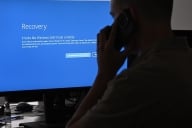You have /5 articles left.
Sign up for a free account or log in.
What do you think that someone starting a new role at a center for teaching and learning (CTL) should know?
What advice would you give to an academic starting a new position at a Teaching and Learning Center? An academic who has collaborated with CTL’s over the years, but who has never worked in one?
Would we all agree on what that advice should be?
I’m in my 5th year as part of the staff of my institutions CTL. In most ways, I still feel like a newcomer. Over my 20 years in academia, I’ve been a professor, an instructional designer, and a director of online and digital learning. (Sometimes all at once). For most of my career, my professional affiliations have been within edtech and online education groups. Most days, I still feel like a welcome guest among the tribe of the educational developer.
So I offer my advice as a relative newcomer. Someone who has not fully transitioned his professional identity into the CTL community, but who feels connected to and inspired by my CTL colleagues. In short, I may be the wrong person to give this advice. I hope that you might do better.
The 3 things that I’d say to anyone new to the CTL world are:
#1: CTLs live in the liminal space between an academic discipline and an institutional service organization.
The academics who work in CTLs are educators. They teach. They do research. They publish. CTL professionals have their own scholarly lines of inquiry within the larger scholarship of teaching and learning (SoTL) space. Educational developers and other professionals who work in CTLs value much of the same things as traditional academics. These attributes include a strong desire for autonomy, academic freedom, and control of one’s own time. Educators working within CTLs are mission-driven, with that mission being to advance learning. They are producers and consumers of learning science. This is an applied discipline, with an emphasis on connecting new knowledge (SoTL) with practice (teaching). They have their own journals, their own professional associations, and their own conferences. They are part of an intellectual tradition, one with shared norms of scholarship and service to the discipline.
At the same time, CTLs are institutional service organizations. They serve all learners and all educators. CTLs operationalize their missions to advance learning through a dizzying combination of programming, consulting, and campus-wide initiatives. The specific portfolio of responsibilities of a CTL may differ from school to school. At every school, the philosophy of the educational developers in their collaborations with faculty to improve teaching is never punitive, top-down, or corrective. CTLs are safe places where educators can focus on their strengths, and not be worried that their weaknesses will be judged. Educational developers work with all educators, no matter their rank or institutional status, as full partners and collaborators.
2: The CTL world is changing.
Anyone coming in fresh to a CTL role may not know how quickly things in CTL-World are changing. The last few years have witnessed an amazing evolution in the organizational structure of many CTLs. They have been re-constituted, redesigned, re-thought, and re-organized. Many institutions have combined previously disparate campus teaching and learning services within the organization of the CTL. Previously separate functions, such as instructional design and education media, have been integrated into many CTLs. Campus-wide experiential and digital learning initiatives have been led by centers for teaching and learning. Colleges and universities are prioritizing advancing learning through evidence-based decision making, a shift that has created new opportunities for CTLs to expand their roles in assessment and evaluation. At many schools, learning innovation efforts shepherded by the CTL are now seen as a core institutional priorities.
This expansion of the institutional role of the CTL has occurred while traditional responsibilities have remained. CTLs did not stop running workshops and events for faculty and future faculty, or cease to engage in individual consulting, or cut back on the hosting of campus communities of practice. The addition of leadership for campus-wide initiatives, and the staffing re-organizations that have supported these new priorities, have all occurred during years in which the demands for the ongoing service offered by CTLs have only expanded. Things have been so busy that there has been little opportunity for CTLs to catch their collective breaths and take stock of the impact of all the recent changes.
3: CTLs, and the academics who work in them, should be at the forefront of leading institutional change.
The idea that CTLs have an equal responsibility for organizational development as they do to educator development is not new. The name of the CTL professional organization is, after all, Professional and Organizational Development. Dr. Connie Schroeder, an influential CTL practitioner/scholar, has written extensively about the need for the profession to shift its lens from collaborating with individual faculty or departments - and towards leading large-scale institutional learning initiatives.
From what I can gather, the idea that CTLs have a responsibility to drive institutional (and system-wide) learning innovation efforts is not all that controversial within the CTL community. CTLs would like to do this work. An increasingly, the provosts and presidents that CTLs report would like them to do this work as well. The challenge is that colleges and universities are very difficult places to change. Advancing student learning is hard. There are no shortcuts or magic bullets. Authentic learning requires quality teaching, which means well-supported educators. Trends such as public disinvestment, rising institutional costs, and demographic headwinds have undermined the basic economic model of many institutions. Higher education has entered into the age of permanent scarcity. How CTL leaders engage with, and ultimately transcend, the constraints that colleges and universities are facing will determine their success in their mission to advance learning.
What would you want someone new to the CTL world to know?








